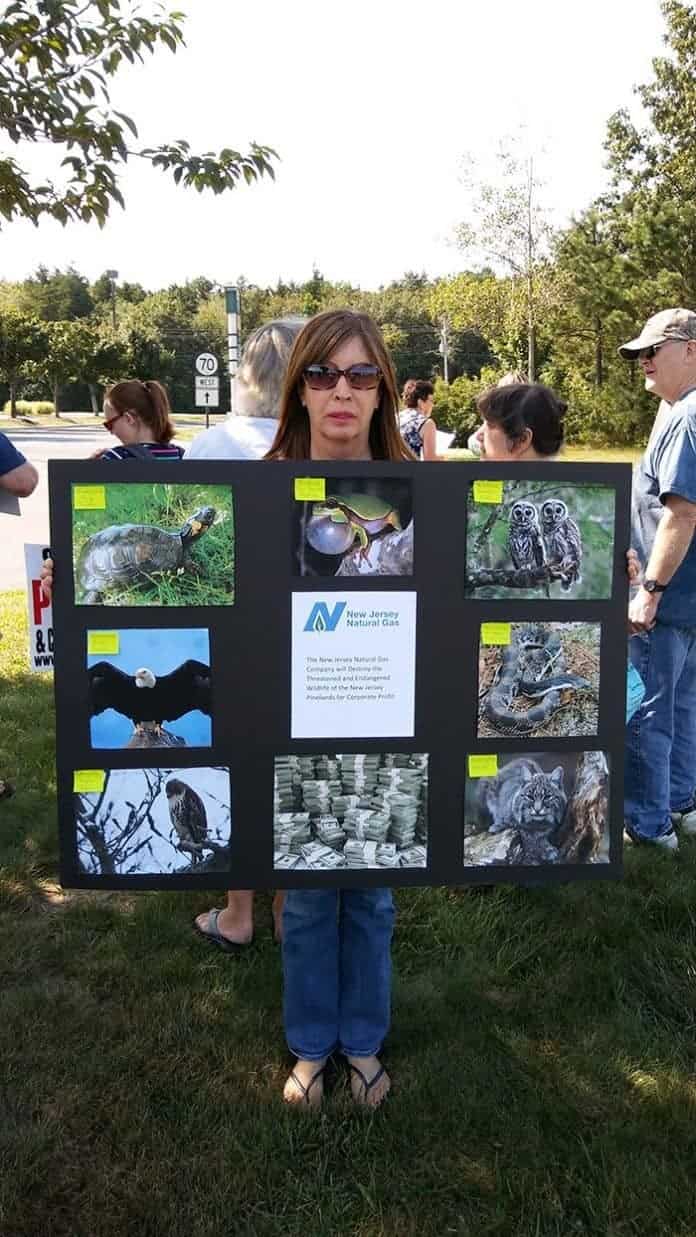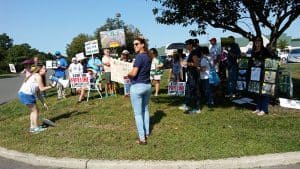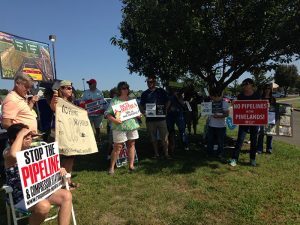
MANCHESTER – Environmental groups protested the proposed natural gas pipeline that would come to town at a recent event in front of the Manchester ShopRite on Route 70.

Members of groups such as the Pinelands Preservation Alliance, Food & Water Watch, ReThink Energy NJ, and People Over Pipelines came out to speak out against the Southern Reliability Link. This is a pipeline that would join up at a source in Chesterfield and head through various towns for 30 miles. It would end in Manchester.
For months, protesters have been demonstrating why the pipeline is dangerous and unnecessary. They cited the natural resources at stake for building a gas line through a forest and over an aquifer.
The Pinelands Commission will make a decision on this at its Sept. 8 meeting.
The Purpose Of The Pipeline
Much debate has gone on about whether the towns that the pipeline would travel through are actually going to benefit from the pipeline. New Jersey Natural Gas, which is proposing the project, said it would make service more reliable for 1 million people in 83 municipalities. They are all served by a source on the northern end of the coverage area. This pipeline would provide a source on the southern end.
Some environmentalists had said publicly that the Joint Base McGuire-Dix-Lakehurst would not be benefitting from the pipeline. A spokeswoman for the base said that it would.

“Gas supply to the eastern portion of Joint Base McGuire-Dix-Lakehurst was identified as a critical system deficiency in the aftermath of Hurricane Sandy,” said Senior Airman Lauren Russell, a public affairs officer, in an email. “The Lakehurst side of the joint base came perilously close to losing gas supply due to the near failure of the single source supply.”
The proposed path of the pipeline goes through the Joint Base, from Route 539 through the southern edge of what was formerly called the Lakehurst Naval Air Station, she said.
“This route was developed in close coordination with Air Force engineering, environmental and legal experts,” she said. The goal was to create a route that made as little as possible of an impact to the staff, base operations, and the environment. Additionally, most of the path travels along land that has already been developed with roadways, avoiding occupied structures and locations where there are more people.







